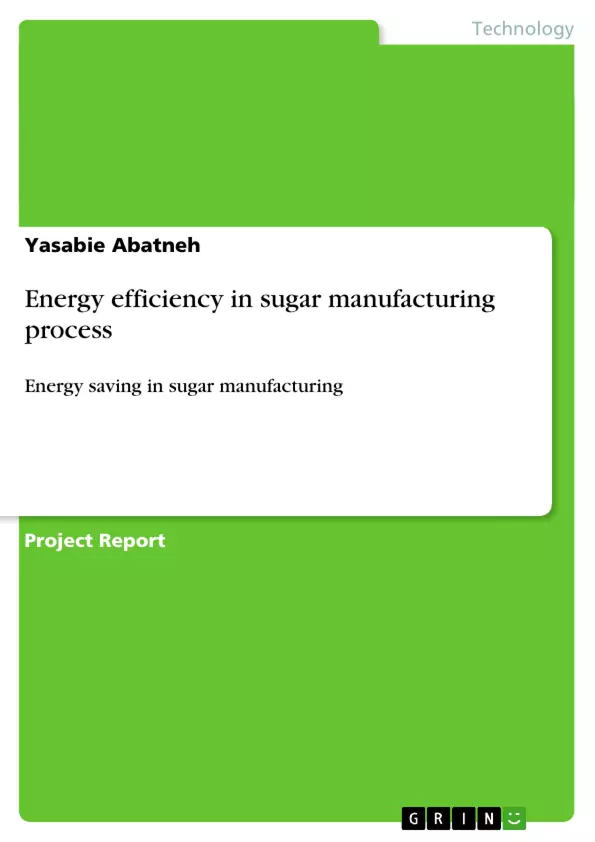People were arguing that whether sugarcane is native to India or New Guinea. They do agree that ancient people liked it and carried with them in their migration and spread throughout south pacific area. Although sugar cane was possibly known in the holy land in biblical time only syrups could be obtained from it. In the 7th- 10th centuries AD, the Arabs spread sugarcane throughout their region of influence in the Mediterranean and eastwards. By the 12th century sugarcane reached Europe and Marco polo reported advanced sugar refining in china toward the end of 13th century. The ancient process for obtaining sugar consisted of boiling the juice until solids formed as the syrup cooled. Egyptians were using lime as purifying agent and carrying out recrystallization, which is still the main step in refining. The development of the sugar industry from the 16th century onward is closely associated with slavery, which supplied the largest amount of labor used at the time. The law cost of labor and price for sugar made many fortunes. The abolition of slavery introduces steam power as a replacement for the animal or human power that drove the cane mills. The use of steam in steady of direct firing was soon applied for evaporating the cane and following this vacuum pans and centrifuge were applied. The manufacturing of sugar is an energy intensive process which was the cause for deforestation, and then later replaced by bagasse burning and using energy efficiently by designing a multiple effect evaporators.
Inhaltsverzeichnis (Table of Contents)
- Introduction
- Historical development of cane sugar
- Process description of sugar and ethanol production
- Objective of the project
- Methodology
- Steam in sugar factories
- Metahara sugar factory
- History & location
- Agricultural operations
- Factory operations
- Marketing
- Human resources
- Sugar Manufacturing Processes in MSF
- Main causes for the high amount of steam consumption and loses in the factory
- Evaporator
- Vacuum pans (Batch pans)
- High moisture content of bagasse
- Steam turbines
- Problem of excess air in the boiler
- Molasses
- Possible solutions of the stated problems
- Increase the number evaporator effects
- Quintuple effect evaporator design
- Adding first effect falling film evaporator
- Design
- Installation of Fully Automated Continuous
- Design of the pan
- Bagasse dryer
- Advantages of bagasse drying
- Bagasse Drying Methods
- Preliminary design
- Replacement of Steam Driven Mill Drives with Electric DC
- Flue Gases Analysis
- Increase the number evaporator effects
Zielsetzung und Themenschwerpunkte (Objectives and Key Themes)
The main objective of this project is to explore ways to reduce process steam demand in sugar factories in Ethiopia. This is driven by the increasing production costs associated with high energy consumption and the need to improve energy efficiency within the sugar industry.- Steam consumption and losses in sugar factories
- Efficient utilization of bagasse as a fuel source
- Technological solutions for reducing steam consumption
- Environmental impact and sustainability considerations
- Potential for cogeneration and electricity production
Zusammenfassung der Kapitel (Chapter Summaries)
- Introduction: This chapter provides a historical overview of the cane sugar industry, outlining its development from ancient times to the present. It also introduces the process of sugar and ethanol production, highlighting the high energy consumption involved. The chapter emphasizes the importance of reducing steam consumption and the potential benefits of energy efficiency in the Ethiopian sugar industry.
- Metahara Sugar Factory: This chapter presents a detailed profile of the Metahara sugar factory, outlining its history, location, agricultural operations, factory operations, marketing, and human resources. It focuses on the major causes of steam consumption and losses within the factory, particularly the evaporator, vacuum pans, high moisture content of bagasse, steam turbines, and the problem of excess air in the boiler.
- Possible Solutions of the Stated Problems: This chapter explores a range of potential solutions to address the high steam consumption and losses in sugar factories. It proposes various technological advancements, including increased evaporator effects, falling film evaporators, automated continuous vacuum pans, bagasse dryers, and the replacement of steam-driven mill drives with electric DC systems.
Schlüsselwörter (Keywords)
The primary focus of this project is on reducing steam consumption and improving energy efficiency in the sugar industry in Ethiopia. Key terms and concepts include sugarcane production, sugar manufacturing, ethanol production, steam consumption, cogeneration, bagasse utilization, energy efficiency, and environmental sustainability.- Quote paper
- Lecturer Yasabie Abatneh (Author), 2013, Energy efficiency in sugar manufacturing process, Munich, GRIN Verlag, https://www.hausarbeiten.de/document/213175


